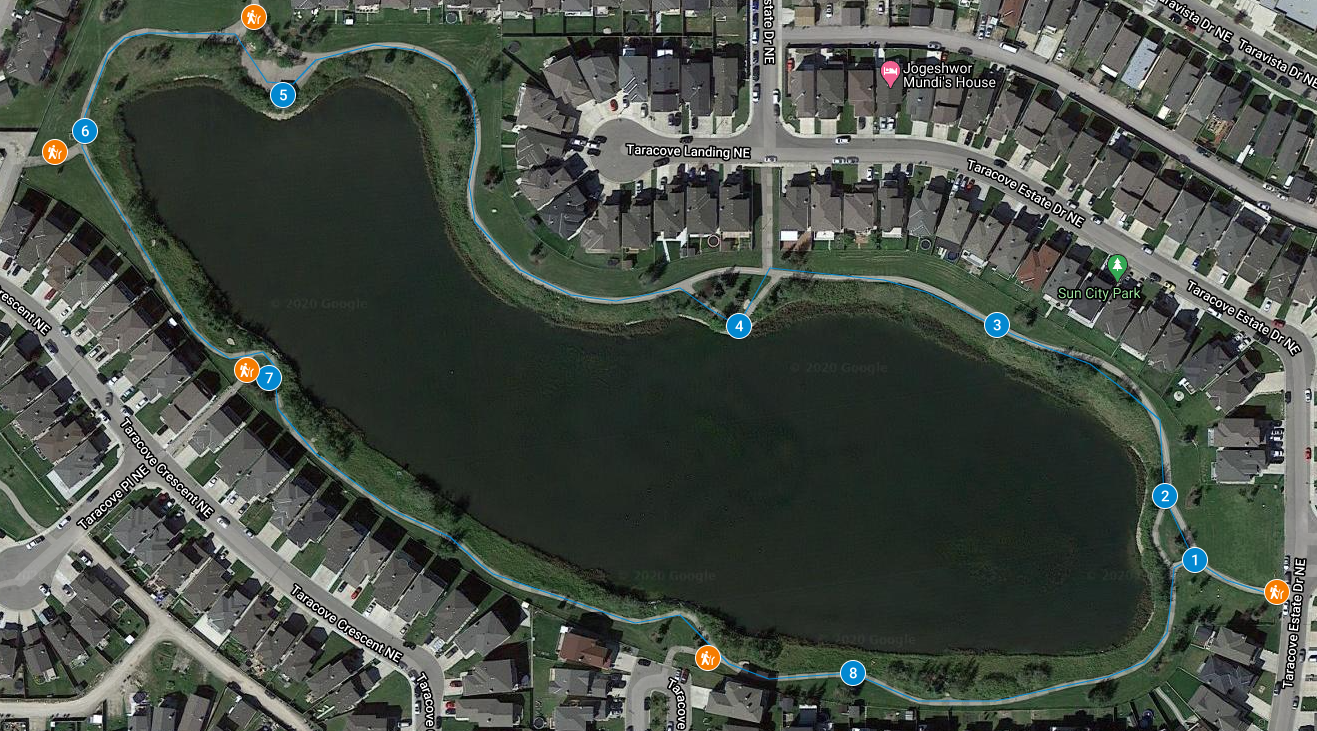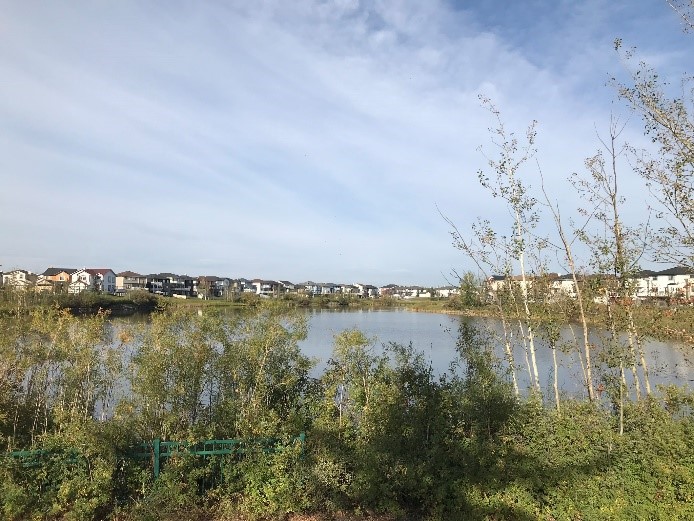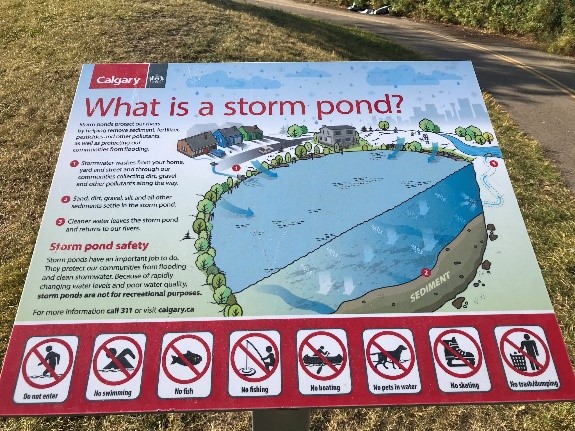Taradale Wetland Park self-guided walk
Welcome to Taradale Wetland Park!
This is a self-guided walk around one of the constructed storm water ponds in the community of Taradale in Northeast Calgary. The entire loop is just over 1 km in length, with several points to stop at along the way.
This wetland offers some excellent opportunities to see some amazing birds that make Calgary their home. Depending on the time of year you may find birds searching for food through the reeds and willows along the shoreline. In the water ducks and geese make themselves at home, resting in relative safety or looking for nesting areas along the shore early in the summer. Keep your eyes open and bring a set of binoculars with you to give yourself the best chance of seeing some amazing wildlife on your walk.
The stormwater pond is not just a great habitat for birds. These created wetlands also provide a great service to both our city and to other communities downstream. As water collects in the wetland it slows down. This gives sediment and pollutions in the water a chance to settle out into the wetland before the now cleaner water travels South and eventually leaves our city for other communities.
There are several points along the wetland at which you can enter the trail system. These have been marked on the map in orange. This guide starts at the Eastern entrance to the wetland and moves around counter-clockwise, following the numbers around. You are welcome of course to start at any entrance and follow the pathway as you would like to.
Stop 1
Walking directions:
East Pathway into the wetland
Walking in from the East you are greeted with a view of the entire wetland spread out before you. From here you can see just how full of life this wetland is. There is a huge diversity of plants that ring the wetland, from grasses and wetland sedges to tall spruce and aspen. This is why wetlands are so important to our ecology, they provide for life for all kinds of species.
In and around the water you will often see many species of water fowl. Ducks and geese are very common, but depending on what time of year you approach the wetland, you may get to see many species of songbird as well. As you get started on your walk you will also come across this sign that does a great job detailing just what a storm water pond is and why we have them in our communities. There is also some important safety messaging here that you should check out as you begin.
Stop 2
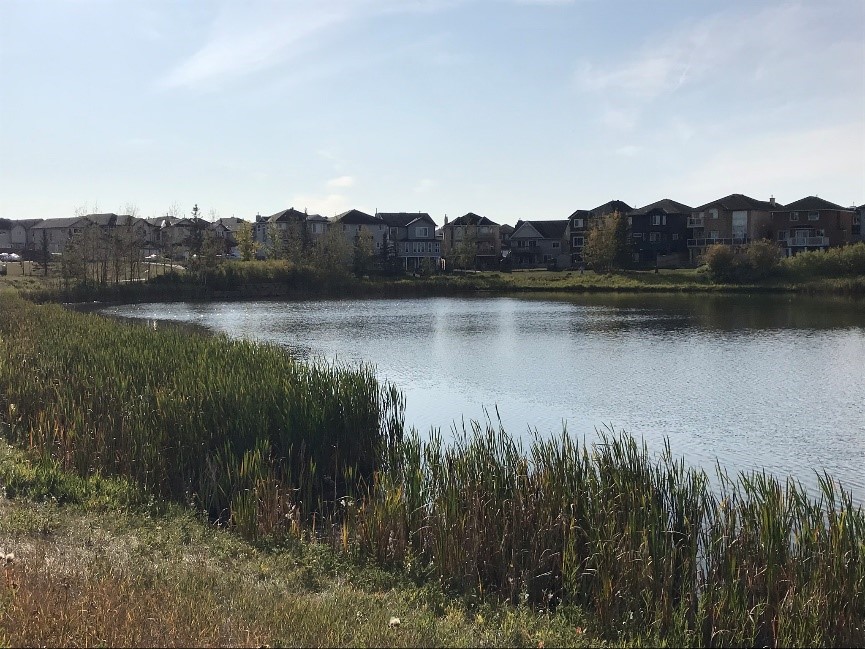
Walking directions:
Stop for a view of the shoreline as you walk along the Northeast of the path.
As you start to walk West along the pathway, stop to look at the thick sedges that crowd the shoreline. These sedges form excellent habitat for numerous species that call this wetland home. You may find nesting ducks using the thick brush for protection as they lay their eggs. Red winged blackbirds will often be seen perched on cattails in wetlands like this. As you watch you may begin to see just how rich the diversity of wildlife can be.
Stop 3
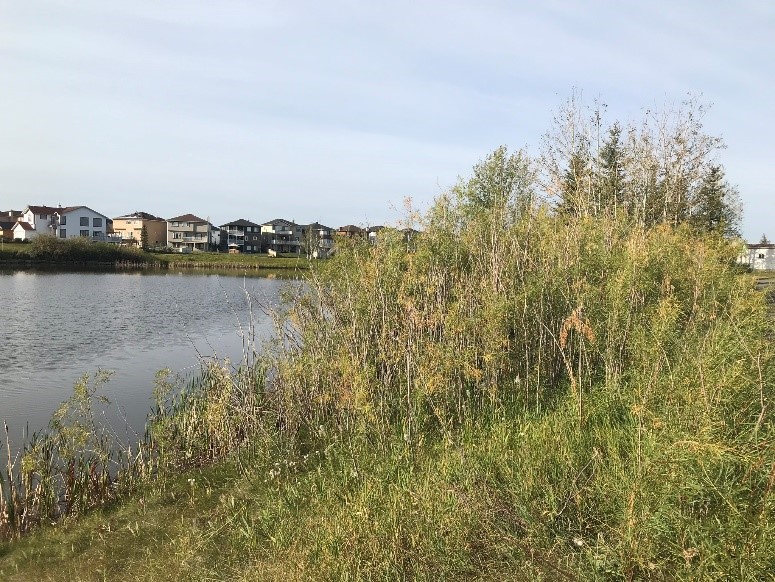
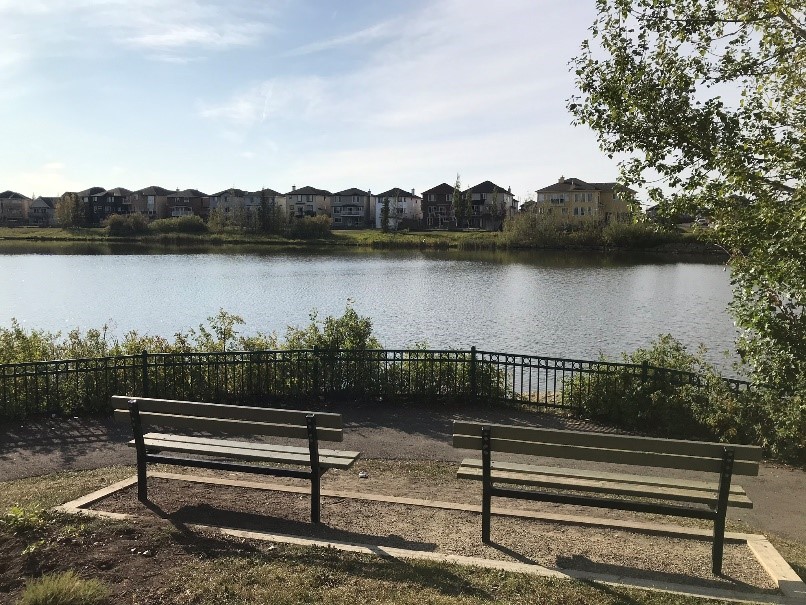
Walking directions:
Take a break at one of the benches that provides a beautiful view of the wetland
You’ve come a good distance now, and hopefully seen some great things already, time for a quick break, have a drink or a bite to eat, and watch the birds moving across the lake. If you haven’t, now’s a great time to look at some of the plants that make up this habitat as well. We talked a bit about sedges earlier, but along much of this shoreline there is another, larger plant, willow. Willow shrubs like you see here provide several useful functions to a wetland. They stabilize the bank, helping to avoid erosion, and provide excellent wildlife habitat. In the fall, they also give a beautiful yellow colour to brighten up the wetland.
Stop 4
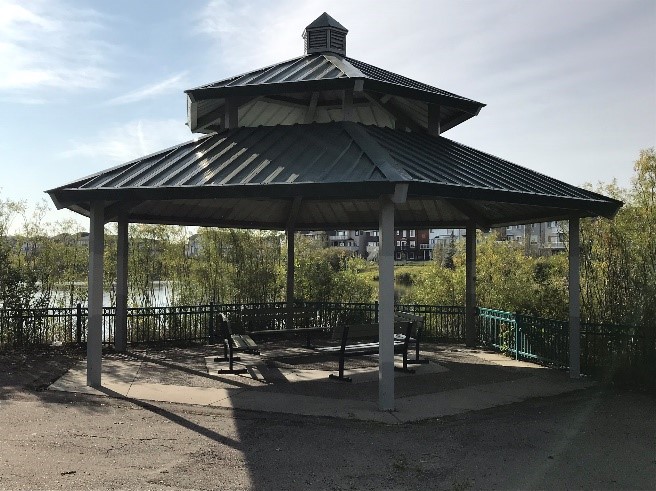
Walking directions:
Carry on West and find a great place to enjoy the sights
If the benches are not your place to rest, walking a little further will bring you to an excellent sheltered location for lunch or any break you require. This great little gazebo not only provides shelter if the weather is unpleasant, but also provides a great back drop for get togethers and all kinds of social events.
Stop 5
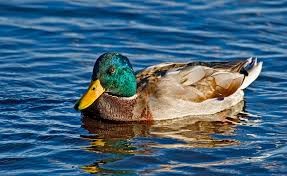
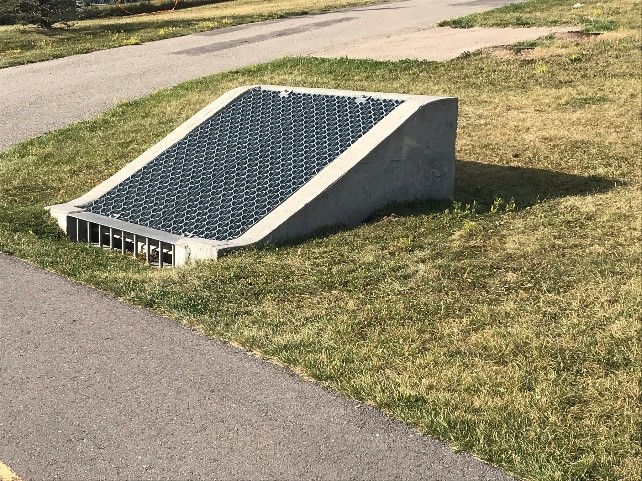
Walking directions:
Follow the path to the west end of the wetland
We’re half way around the park now. From here you can stop and take in the whole length of the pond again. Does it look different now that you’ve had a few chances to look more closely at the biodiversity present in this wetland?
From this end of the wetland you often get to see many ducks and other water birds moving through the water. Ducks and geese can be found here through much of the year, using the pool to rest and feed and raising young amongst the sedges.
The other item you will notice at this end of the pool is a large concrete structure that helps to move water through the wetland. Storm water is collected off of homes, streets, and many other places and is often contaminated when it enters the storm water system. These ponds help reduce that pollution load in a couple of ways. The water slows, allowing sediment to drop out of the water and collect on the bottom. The shoreline plants also filter water, pulling out pollutants and leaving cleaner water to head downstream. This replicates the purpose that wetlands have always served, to cleanse and filter fresh water.
Stop 6
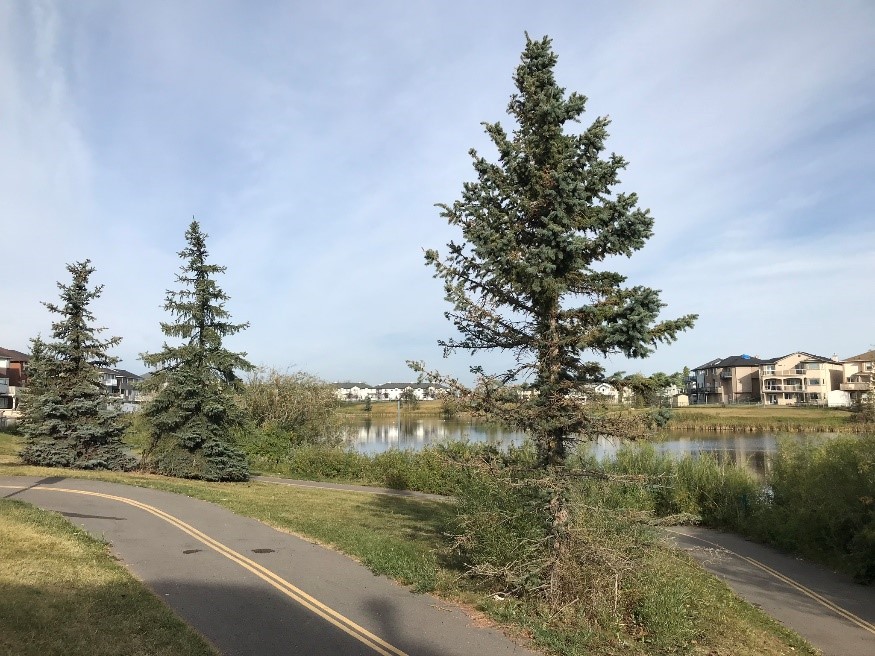
As you begin to head East along the trail you will notice that the water isn’t the only habitat present for wildlife in this park. Groups of trembling aspen and numerous shrubs also surround the wetland. This is similar to the ecology of a natural wetland. The wet conditions, unusual for Alberta’s prairie ecology, become an oasis for many different types of plant and animal. This is what makes wetlands such valuable ecosystems for biodiversity.
All along the storm pool you will find Colorado blue spruce as well. These trees are ideal for our climate, being drought tolerant and able to survive our cold winters. This has made them attractive trees both for city planting and for private land owners, and you will see them all across Calgary.
The stiff branches also make for good homes for song birds and other small animals, so be sure to look carefully as you pass them to see who may be home. With dense willow stands, trembling aspens and spruce along the pond, this side of the storm pool has an impressive amount of habitat for wildlife to take advantage of. As you are finishing off your walk and heading back to the start be sure to take the time to see who else is using the park you are walking through.
Walking directions:
Head East, finding more benches and more wildlife habitat
Taradale is just one of many communities across Calgary that contains a constructed storm water pond. These ponds, as you may now know, serve several purposes within our community. They are cleaning water in our city, increasing our biodiversity of both plants and wildlife, and providing excellent habitat for our wildlife to live in. In addition, they provide excellent green sections within our community that we can enjoy. Thank you for taking the time to get out and enjoy this part of Calgary’s green ecology.


